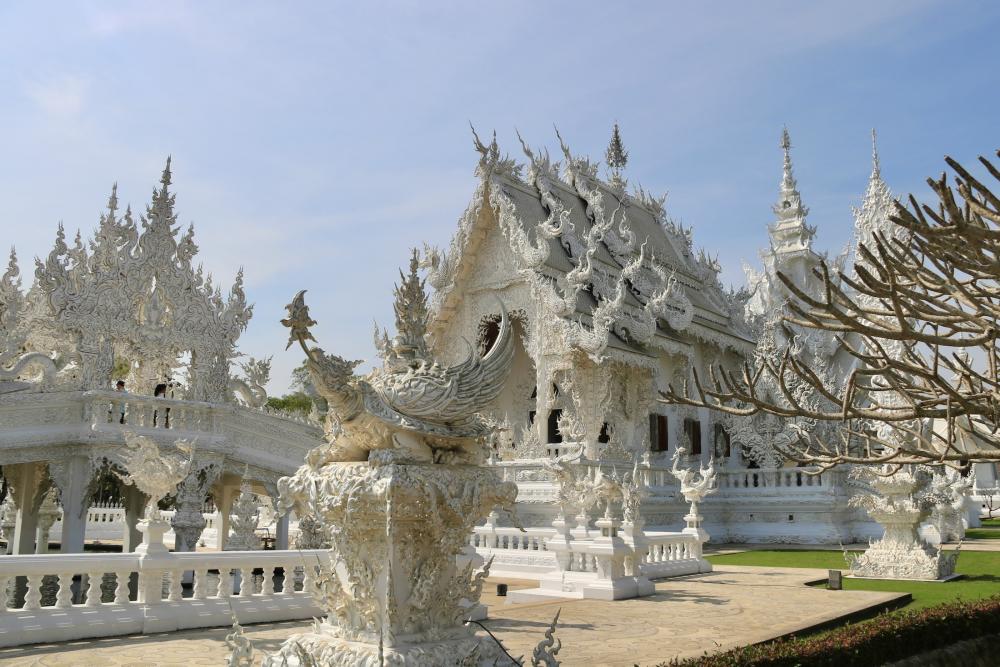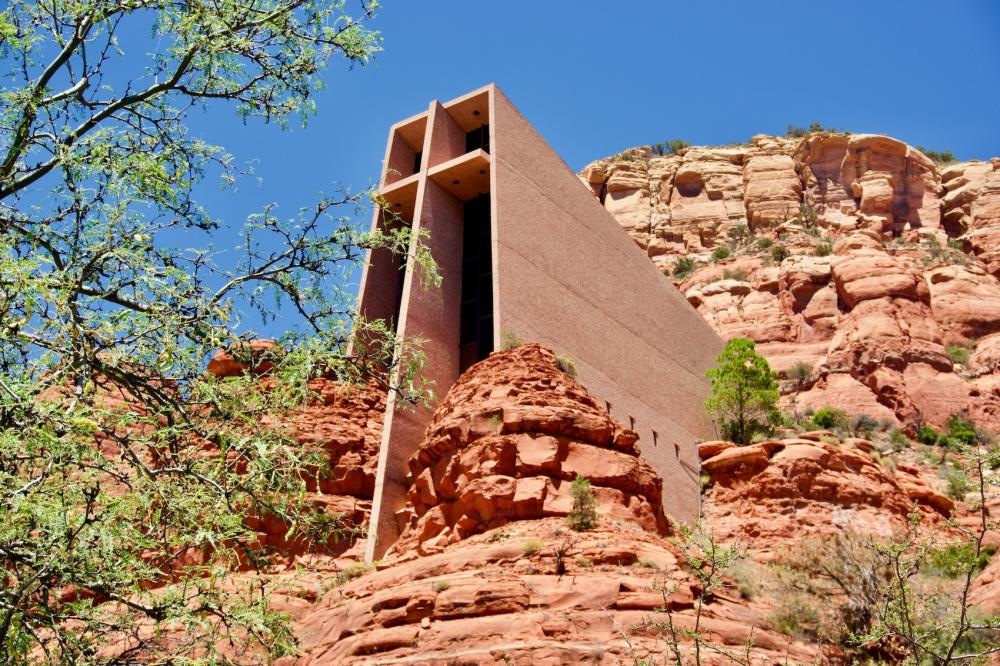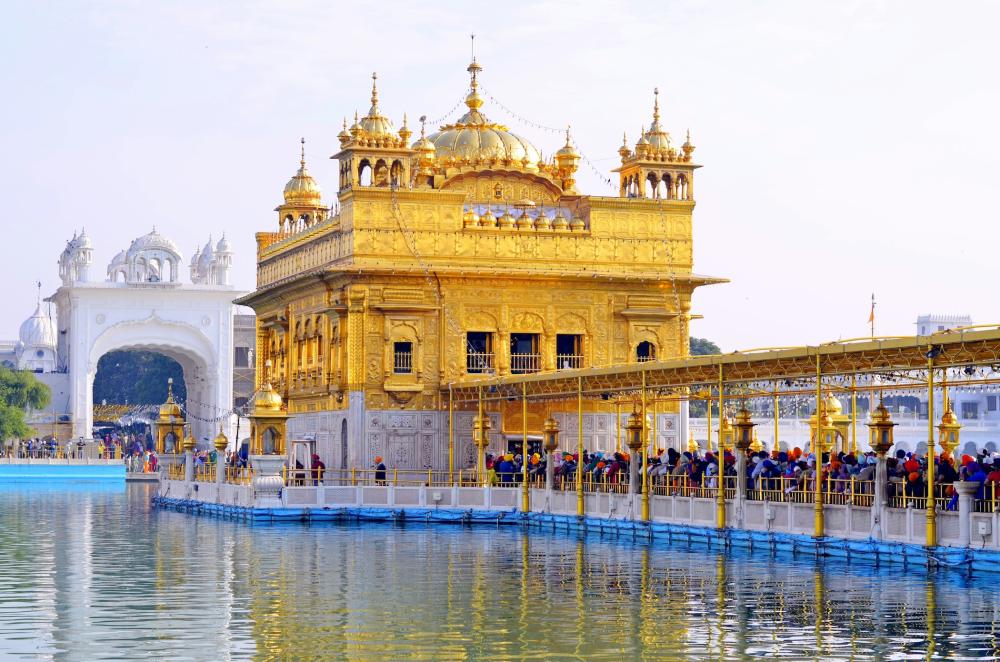7 of the most breathtaking religious buildings around the world


World Religion Day takes place every January on the third Sunday of the month. The day started in the United States but has since become an international day of celebration, aiming to promote understanding of different beliefs across the globe.
This year, World Religion Day falls on 16th January 2022 in celebration and recognition of the diversity of religions, beliefs, cultures, and backgrounds that exist. I have pulled together a selection of the seven most breathtaking and impressive religious buildings that exist in the world today.
Wat Rong Khun
Also known as the White Temple, Wat Rong Khun is located outside the town of Chiang Rai in Thailand. It is recognised by its white colour and the use of pieces of glass which are designed to signify the purity of the Buddha, and the Buddha’s wisdom and teachings. The Temple was designed and constructed by Chalermchai Kosipipat and opened its doors in 1997 to visits, though it is still incomplete. Once completed, the White Temple compound will have nine buildings in total, including the existing ubosot (for the performance of the Buddhist ordination ritual) and living quarters for monks.
Hassan Mosque II
The Hassan II Mosque is the second largest functioning mosque in Africa and seventh largest in the world. A maximum of 105,000 worshippers can gather together for prayer; 25,000 inside the mosque hall and another 80,000 on the mosque’s outside ground. Located in Morocco, its minaret (tower) is the world’s second tallest at 210 metres topped by a laser, the light from which is directed towards Mecca.
Meenakshi Amman Temple
The Meenakshi Temple is located in the ancient temple city of Madurai, Tamil Nadu in India. It is one of the most revered Temples for Tamilian Hindus. The Temple has 14 gopurams, or gateway towers, and 33,000 sculptures – this includes two golden sculptured vimanas that is the tower above the sanctum; the southern gopuram is the tallest of them all with a height of 170 feet.
Paro Taktsang Monastery
The Paro Taktsang, also known as Tiger’s Nest, is a sacred Buddhist site located in the cliffside of the upper Paro valley in Bhutan, 3120 metres above sea level. The monastery’s unique feature is its isolated location making it only accessible via mountainous paths. It is deemed to be one of the most prominent and sacred places in Himalayan Buddhism where Guru Padmasambhava (Second Buddha) first landed in Bhutan in the 8th century.
Chapel of the Holy Cross
Located in the buttes of Arizona, the Chapel of the Holy Cross is a Roman Catholic chapel. Directly over a butte, the chapel is around 200 feet above the valley. Local sculptor Marguerite Brunswig Staude commissioned the chapel, taking inspiration from the then newly constructed Empire State Building and its powerful image of steel framework. Although of Catholic faith, Staude intended the chapel to have universal appeal, with its doors ‘open to one and all, regardless of creed’.
Jerusalem Synagogue
The Jerusalem Synagogue can be found on Jerusalem Street in Prague in the Czech Republic. Designed by Wilhelm Stiassny, it has been a religious and cultural centre for the Jewish community since 1906. The synagogue features a unique convergence of styles, including Art Nouveau and Moorish architecture. The exterior’s brightly coloured facade features a large central arch, framing a rosette window with the Star of David. Throughout the year, the synagogue regularly hosts Jewish and classical music exhibitions, and other activities.
Sir Harmandir Sahib
Sir Harmandir Sahib is the most famous and significant place of worship in the Sikh religion. Construction was initiated by Guru Arjan, the fifth Sikh Guru and started in 1581, taking almost 8 years to complete. Also known as The Golden Temple, the gurdwara’s marble structure is coated in 24 karat gold. Standing in the middle of a pool, this often gives the illusion that the Golden Temple is floating in the water. This pool surrounding the Golden Temple is known as the Amrit Sarovar, which is considered sacred.
On World Religion Day take a moment to promote understanding and embrace diversity; the ultimate goal is to unite people everywhere, despite religious beliefs and differences. At SOAS you can study a wider range of religious and philosophical traditions in more depth through our Department of Religions and Philosophies. Happy World Religion Day!
About the author
Rachael Woodroffe is a SOAS Digital Ambassador currently studying an online and distance learning MSc in Global Corporations and Policy. Rachael lives in the South West of England and works full-time in Corporate Affairs alongside her studies.






